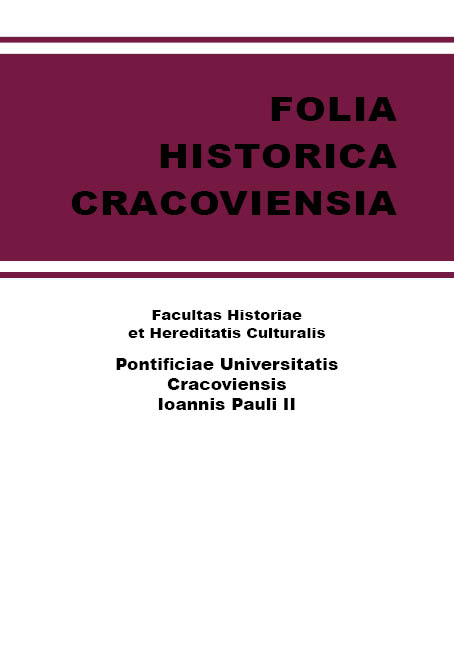The history of the foundation of the Calced Carmelite Church in Wola Gułowska
The history of the foundation of the Calced Carmelite Church in Wola Gułowska
Author(s): Irena RolskaSubject(s): Christian Theology and Religion, Philosophy of Religion, History of Religion
Published by: Wydawnictwo Naukowe Uniwersytetu Papieskiego Jana Pawła II w Krakowie
Keywords: Calced Carmelites; Wola Gułowska; Krasiński family;
Summary/Abstract: In 1633, Ludwik Krasiński († after 1644) was given a consent by Bishop Jan Albert Waza to establish a Calced Carmelite monastery on Krasiński’s property in Wola Gułowska. The foundation of the Carmelite congregation, far from much frequented trails, was in line with eremitic ideas and spirituality of the order. The Wola Gułowska monastery became a second largest (after Krakow) Carmelite monastery in terms of the number of monks. The monastery in Wola Gułowska had a formative character, with the novitiate and philosophical studies. In the 17th century the church became an important Marian sanctuary, as it possessed a much venerated painting of the Virgin Mary with the baby Jesus dating back to the early 15th, late 16th century.The construction of the church, commenced in 1659, took considerable funds. Not only was it supported by the Krasiński family, but also by many representatives of aristocratic families, local landlords and priests, such as canons Michał Krassowski and Mikołaj Firlej. The three-nave basilica church was being built for over 100 years and in several stages. It was the funds gathered in the 18th century that allowed the builders to complete the two-tower partitioned facade in the years 1770–1780. In the middle of the 18th century, the altars were made in the church by monastic sculptors Grzegorz Kaczyrek and Izydor Mastalski. The seventeenth-century designers of the church or of its eighteenth century façade still remain unknown.
Journal: Folia Historica Cracoviensia
- Issue Year: 22/2016
- Issue No: 1
- Page Range: 377-398
- Page Count: 22
- Language: English

